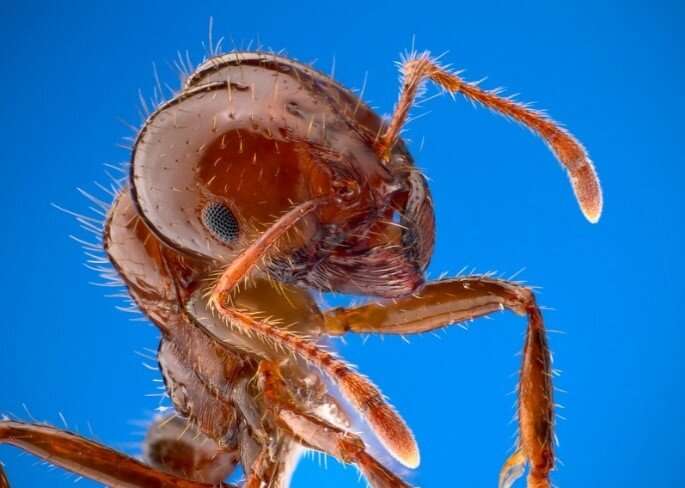Odors produced by soil microbes attract red fire ants to safer nest sites

Newly mated queens of the red fire ant select nest sites with a relatively low pathogen risk by detecting odors produced by soil bacteria that inhibit the growth of ant-infecting fungi, according to a study published September 10 in the open-access journal PLOS Pathogens by Daifeng Cheng and Yongyue Lu of South China Agricultural University, and colleagues. As noted by the authors, this is the first time that the chemical signals of soil microorganisms have been reported to affect the nesting choice of newly mated queens.
Soil-dwelling insects are at risk of pathogen infection. When choosing nesting sites, insects could reduce this risk by avoiding contact with pathogens. Yet it has not been clear whether social insects can reliably detect and avoid pathogens at potential nesting sites. In the new study, the researchers show that newly mated queens of a soil-dwelling ant—the red fire ant Solenopsis invicta—nest preferentially in soil containing more actinobacteria, which produce compounds that inhibit the growth of pathogenic fungi.
The ants are attracted to two volatile compounds produced by these bacteria. Queens in the actinobacteria-rich, pathogen-depleted soil benefit from a higher survival rate, enabling the ant population to grow. According to the authors, the results show for the first time that ants may be attracted to soil based on chemical cues produced by resident actinobacteria, which may provide protection against pathogenic fungi. The findings may help guide strategies that alter the soil microbiota to manage S. invicta, which is notorious invasive pest in many countries, where its rapid spread has caused great economic losses and ecological problems.
The authors note, "Queens of the red fire ant apply an interesting way to avoid potential pathogens infection when nesting."
More information: Huang H, Ren L, Li H, Schmidt A, Gershenzon J, Lu Y, et al. (2020) The nesting preference of an invasive ant is associated with the cues produced by actinobacteria in soil. PLoS Pathog 16(9): e1008800. doi.org/10.1371/journal.ppat.1008800
Journal information: PLoS Pathogens
Provided by Public Library of Science




















